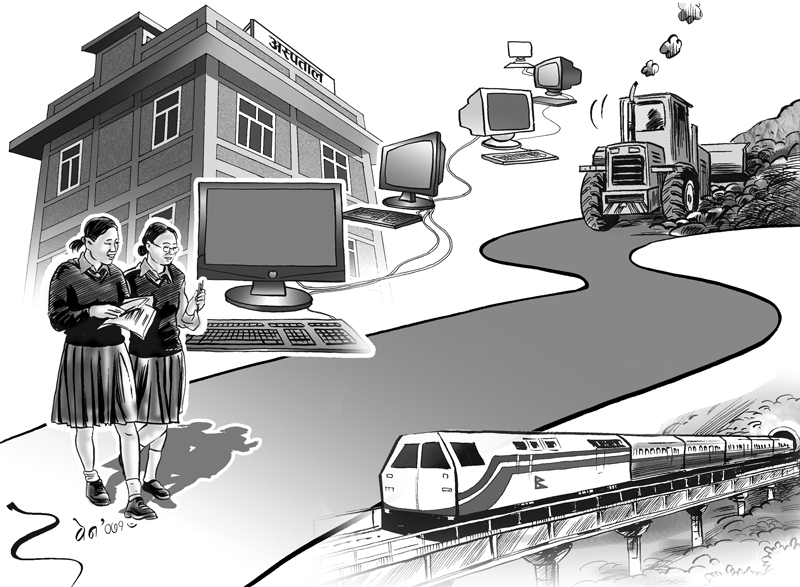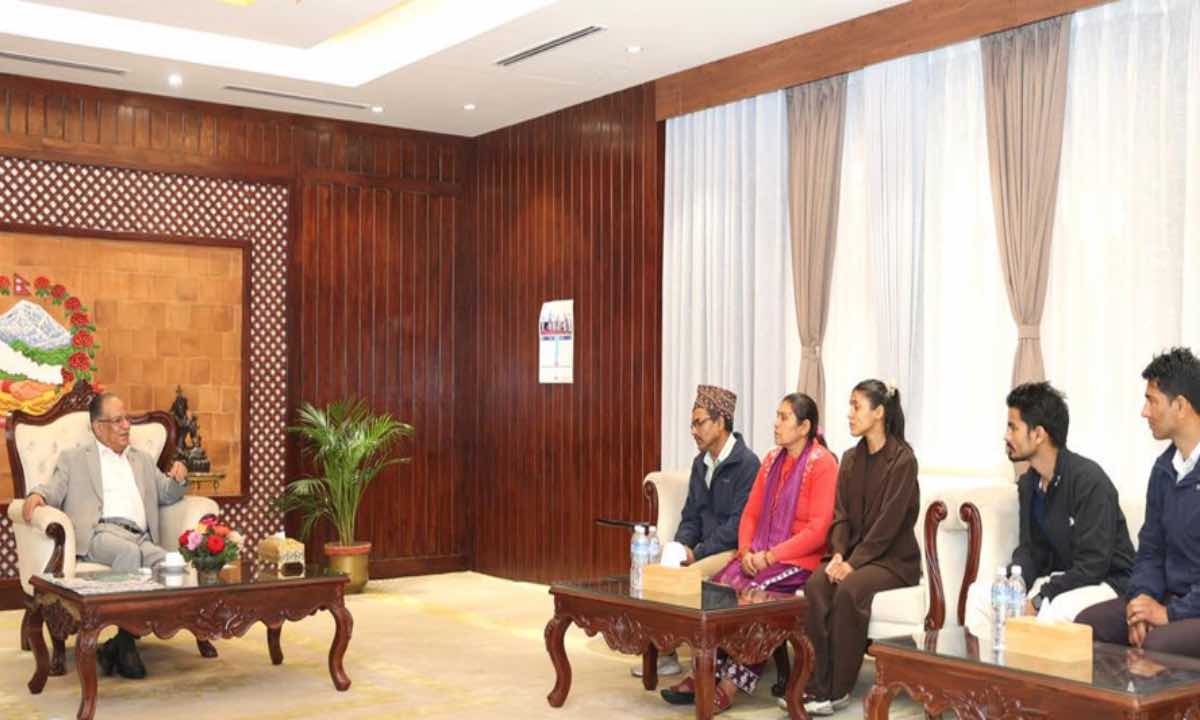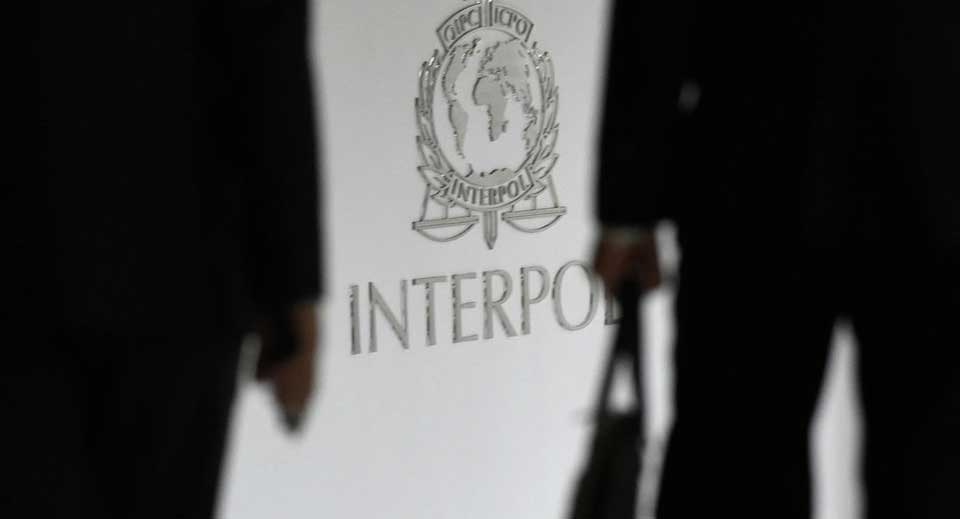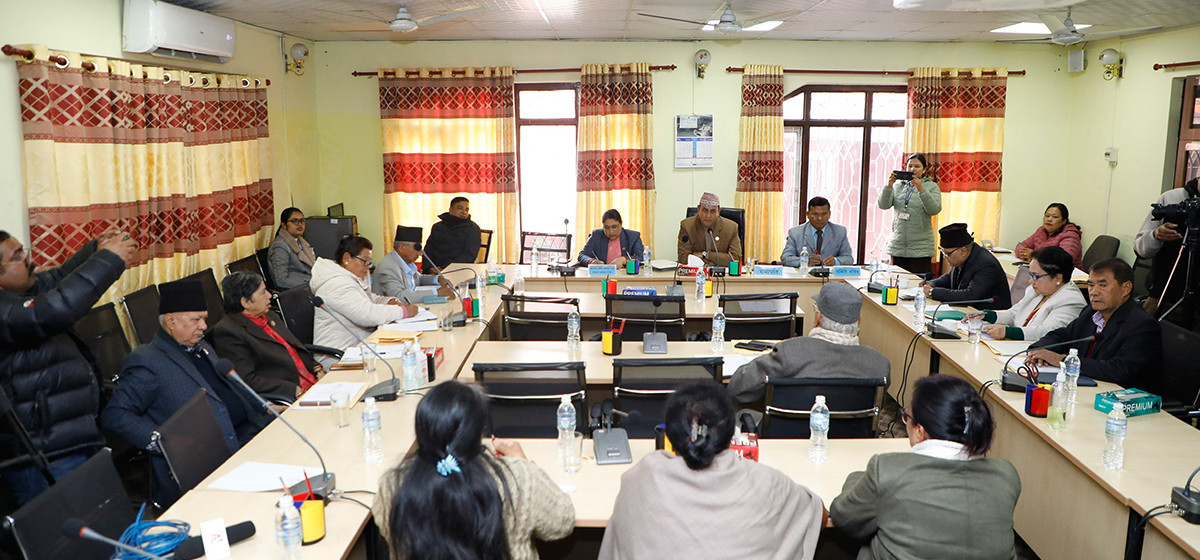
OR

Local representatives should invest their efforts in creating investment friendly environment. Projects they pledged need huge investment.
People demonstrated overwhelming enthusiasm in recently completed local elections across the country not only because these elections were held after two decades of moratorium, but because elections generated hopes to get their development needs addressed through their own elected representatives. Unlike in past local elections, political parties made development and economic prosperity key agendas in their election manifestos.
With its shift to federal republic set up from unitary monarchical state, Nepal has witnessed a big change in political landscape. Decade-long Maoist insurgency that ended in 2006 brought in social changes across the country and Madhesh Movement brought Madhesh issues to the fore. The focus of national politics in the last 10 years has been on securing fundamental political and social rights of the citizens. Development agendas were pushed to the backburner. Perhaps this is the reason political parties highlighted economic agendas in their election manifestos.
Almost all of the candidates offered their roadmap for local developments with focus on infrastructure, energy, road, transportation, information and communication technology and so on. They seem to have realized what the people really need.
To capitalize on people’s aspiration, they made tall promises of metro rail / monorail network, smart city, model city/village, super highways etc.
The elected representatives are going to find it hard to keep those promises.
Election candidates have not acknowledged, perhaps deliberately, the real challenges facing development sector. They never bothered to find the reality behind the sluggish development activities before making big election pledges.
Situation is such that Prime Minster himself has to direct the concerned officials for as small task as filling in potholes on Kathmandu roads. Some elected representatives, including mayor of Kathmandu Metropolitan City, have publicly expressed their dissatisfaction with bureaucratic process that has hampered implementation of pledged plans and programs.
Some of the projects pledged by elected representatives need huge investment, which won’t be possible without attracting Foreign Direct Investment (FDI). Election promises can’t be implemented without overcoming existing development bottlenecks, which are many.
First, the elected representatives should invest their full efforts in creating investment friendly environment. They should know that plans and programs can’t be implemented without removing the existing obstacles in implementation process and attracting private investment. Legal and bureaucratic hurdles, poor vision in identifying projects, insincerity of project developers, are pushing back our development efforts.
Second, most development projects are facing tough time dealing with the land acquisition and forest clearance, which have thrown their implementation prospects into the cloud of uncertainty. Conservative rules regarding the acquisition of government land, especially forest land, have scared the developers leading to possibility of failure of the projects.
Third, lack of effective project monitoring mechanism has hindered effective implementation of the project. Local representatives can’t do everything to remove the development obstacles on their own but they can pressure the government and the parliament for the support. There is no harmony between government priority and existing laws and procedures governing infrastructure project development. Government documents feature infrastructure development with major emphasis. But in reality, there are reports of hosts of obstacles hampering even national pride projects.
There is mismatch between people’s expectations and government resources—human, physical and technological. Nepal needs massive investment in infrastructure sector to unleash massive economic activities, which can boost economic growth, generate employment and industrial outputs. World Economic Forum report shows Nepal stands at 130th position out of 138 countries monitored, in terms of infrastructure development.
Lack of quality infrastructures is hindering our journey to prosperity. People’s expectation for economic opportunities can be addressed through massive investment in critical infrastructures. Given our limited resources, there is no alternative to FDI and private investment.
The 2017 Economic Survey of Nepal clearly states: “It is necessary to create foreign investment environment since more investment is required for development and construction works particularly in federal governance structure.” Current budget has offered to attract FDI: “Interagency coordination will be increased and administrative procedures related to foreign investment will be made clearer and simplified.”
Likewise, Sustainable Development Goals Baseline Report of National Planning Commission promises as much: “For meeting the private sector investment financing gap, foreign direct investment (inward stock) is targeted to increase to 20 percent of GDP in 2030 from less than 3 percent in 2015.”
The World Bank’s ‘A Vision for Nepal 2010’ report states that the country needs to invest nearly eight to 12 percent of the GDP annually until 2020 to plug the infrastructure gap.
But how will these goals be achieved?
Under-budget allocation, poor implementation, lack of clear development vision and priorities, conventional mechanism within government for execution of the projects, unfriendly laws, among others, are responsible for dismal performance in infrastructure delivery.
It is equally challenging to lure private sector into the infrastructure sector, which requires huge investment, involves more risks and yields comparatively less in return. Private sector accounts for less than one percent in total infrastructure investment.
Under federal setup, Nepal needs independent mobilization of resources and investment by each state reducing the dependence on resources allocated by the center. It will be challenging to deliver infrastructure projects as desired with the limited financial, technology and human resources.
The 14th plan released last year by National Planning Commission has acknowledged the necessity of boosting investment. Without involving private sector—both domestic and international investors—it will be difficult to meet the target of over Rs 2400 billion investment by the end of three-year plan. The plan aims to secure 54.7 percent of total investment by private sector, 39.4 percent by the public and 5.9 percent by cooperatives so as to meet the target of average 7.2 percent growth. We cannot achieve this without ensuring investment friendly climate and lucrative offers that other countries make.
Private investment would be crucial to accelerate infrastructure delivery, generation of employment and boosting industrial outputs as a cornerstone for realizing average 7.2 percent growth. If we clear infrastructure bottlenecks, it will pave the way for private sector investment which will generate more employment and revenue. Without sound infrastructure, we can’t boost our economic activities to achieve the growth targets.
Investment in industrial sectors will bring down skyrocketing trade deficit, which stands at whopping two billion rupees per day. We are poor performers in term of infrastructure development among Asian countries.
As we are embarking on federal set up, we need to harmonize programs and projects at federal and state level. Locally elected representatives are seeking more authority in federal set up. Some instances of claim and counter-claim for authority to implement development programs and projects have started to surface. Even large-scale projects are facing problems of land acquisition, forest clearance and other legal and administrative hurdles, though some crucial laws are amended to facilitate private investment.
Local representatives can play crucial role to put pressure on different government agencies and the parliament to simplify the process of executing projects.
Local representatives, who made tall promises during the election, should know that until and unless we create appealing environment for implementing development projects, there is no chance of those promises being realized.
They should know that we are incomparably poor in infrastructure development, not because of lack of plans but due to longstanding development bottlenecks such as lengthy bureaucratic process, ill intentions of some government officials who do not cooperate with developers and line agencies, unfavorable legal provisions, lack of policy stability and policy predictability, frequent changes in government officials with the changes in government and absence of national consensus on how to implement development projects.
Elected representatives should team up to overcome such adversaries. Will they be able to? They should be.
The author is a consultant with the Office of the Investment Board Nepal
prabhakarji@gmail.com
You May Like This

Promises made, promises delayed: Khotang sans textbooks in English
KHOTANG, April 17: While the new academic session has already begun across the country, textbooks in English language are yet... Read More...

Parliament candidates making promises beyond their powers
KATHMANDU, Nov 10: Though the new constitution has limited the role of the federal parliament to making national policies and laws... Read More...

Madonna promises oral sex to Clinton voters
Never shy of controversy, the pop star Madonna has offered fellatio to anyone who votes for Democratic presidential candidate Hillary... Read More...




Just In
- Chemical fertilizers imported from China being transported to Kathmandu
- Man dies in motorcycle accident in Dhanusha
- Nepal face early setback as four wickets fall in powerplay against UAE
- Australian unemployment rate rises to 3.8 percent in March
- Gold price increases by Rs 700 per tola
- Fire destroys wheat crop in Kanchanpur, Kailali
- Bipin Joshi's family meets PM Dahal
- State Affairs and Good Governance Committee meeting today















Leave A Comment